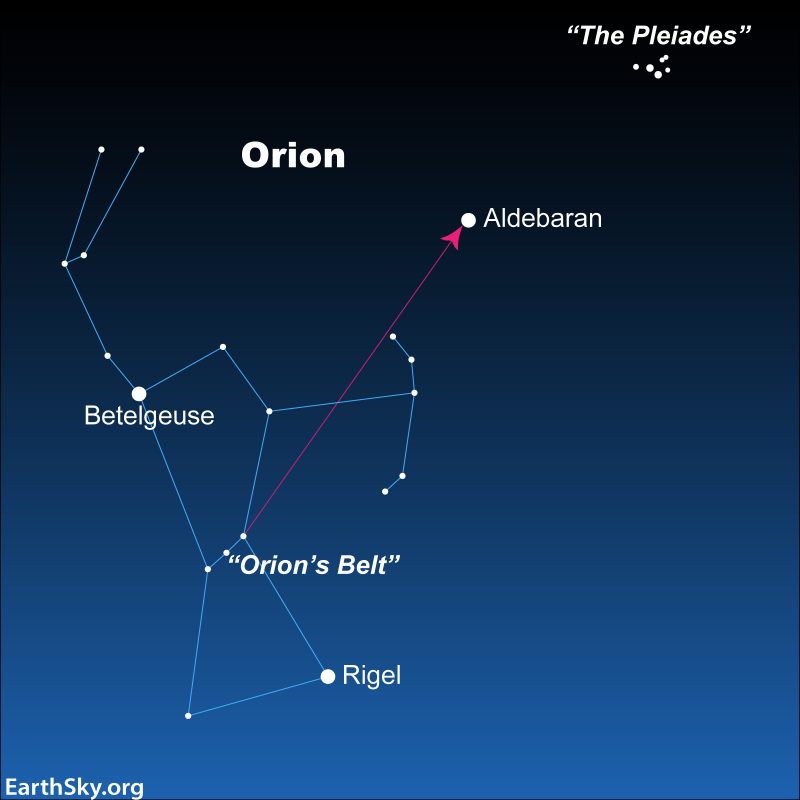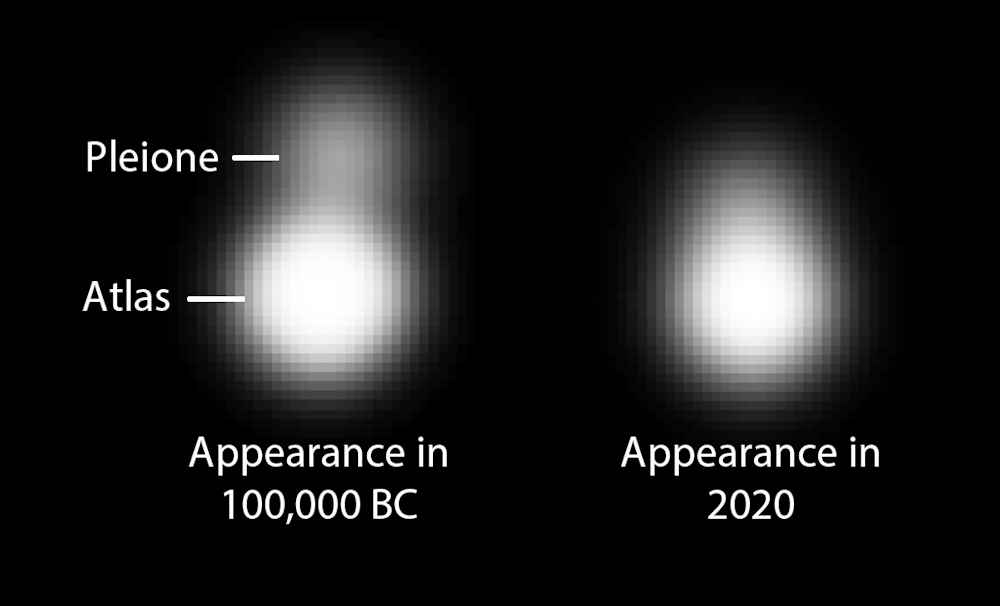The Pleiades - The World's Oldest Story?
December 08, 2023
The World's Oldest Story
The oldest known story is thought to be the Epic of Gilgamesh, which is 4,000 years old.
However, there is a new contender that could be much, much older.
By a lot. And I mean, a lot.
To some, the story of the Seven Sisters is said to be the oldest story in existence.
How old are we talking?
Try 100,000 years old.
Yeah, you read that right. 100,000 years old.
It’s the story of the Pleiades. A story told by cultures all around the world.

Sure, there will be some variation of the story based on where in the world you are, but there’s one thing that is consistent:
When they talk about the Pleiades, they talk about the seven sisters.
Pretty cool, right?
Well, it gets a bit weirder the more you dig into this.
But before we do, let’s establish some baseline information, so we can all be on the same page.
The Pleiades
The name Pleiades comes from Greek Mythology (we’ll get to that in a bit).
Scientifically speaking, the Pleiades is an open stellar cluster of hot, blue, young stars, which were formed about 120 million years ago, and is surrounded by blue reflection nebula.
Visually, they are an awesome star cluster that can be seen high in the night sky during December and January (if you’re in the Northern Hemisphere like I am).

If you look carefully at the star cluster, you’ll probably notice there are 6 bright stars.
6 stars.
If we can only see 6 stars, why do we call them the Seven Sisters?
It’s an interesting question, isn’t it?
The story of the Seven Sisters is one that is told by cultures all around the globe.
All. Around. The. Globe.
How could cultures from different parts of the globe all have a similar story? Why do they all talk about seven sisters, when it’s clear that you can only see 6 (with amazing eyesight in a dark sky place)?
This is the key to understanding how the story of the Pleiades may date back to 100,000 years ago.
Yep, you read that right.
The story of the Pleiades may very well be 100,000 years old.
Let’s dive into it, shall we?
The Seven Sisters
In Greek mythology, the Pleiades were the seven beautiful daughters of Atlas (the guy who was holding up the world).
The lustful hunter Orion pursued the sisters relentlessly, and Atlas could not help (he was busy, you know, holding up the entire world).
In order to protect the daughters, the mighty Zeus transformed them into stars.
Over time, one of the sisters fell in love with a mortal, and fell out of the sky, which is why we only see six stars.
That’s a neat story. But what about the story told in a different part of the world?
A part of the world that is considered isolated from contact with other cultures?
Aboriginal groups across Australia tell the story of the Pleiades as a group of seven young girls being lustfully pursued by a hunter (their version of Orion).
One of the sisters was able to hide from the hunter. This is why only six stars are visible in the sky.
The Missing Sister
Many cultures around the world, including European, African, Asian, Indonesian, Native American, and Aboriginal Australian, have a similar story about a group of stars called "the seven sisters."
In this story, there are supposed to be seven stars, but usually only six can be seen. Each culture has its own explanation for why the seventh star is missing.
Let’s focus on the Greek and Aboriginal Australian versions.
There's a mystery about why the story told by the Aboriginal Australians is so similar to the one from Greece.
Some people thought that Europeans might have brought the Greek story to Australia, and the Aboriginal people changed it a bit to fit their culture.
But it turns out that the Aboriginal version is probably way older than when Europeans first came to Australia. Plus, the Aboriginal Australians didn't really have much contact with other parts of the world for about 50,000 years.
So, it's puzzling how they have a story that's so similar to one from far away.
Current data shows all humans today are descended from people who lived in Africa a long time ago, around 100,000 years back.

They eventually moved to different parts of the world, including Australia, Europe, and Asia.
This means Europeans and Australians share a common ancestor.
And this is where the big question comes into play.
Is it possible the stories of the Seven Sisters and Orion are so old our ancestors were telling these stories to each other around campfires in Africa, 100,000+ years ago?
Could this be the oldest story in the world?
Stars In Motion
The Gaia space telescope was launched about 10 years ago, and has been mapping the motion of all the stars in our galaxy.
Using the data from Gaia shows the stars of the Pleiades cluster are slowly changing positions in the sky.
Right now, two of these stars, Pleione and Atlas, are so close to each other that when we look up, they seem like just one star, not two.
However, if we use what we know about how these stars move and imagine going back in time 100,000 years, the view is different.
Back then, Pleione was farther away from Atlas, which means people looking at the sky could clearly see both stars separately.
So, a long time ago, anyone looking at the Pleiades cluster would have actually seen seven stars, not six like we do today.

The idea that the movement of the stars can help explain the main question we’ve been discussing:
Why do so many cultures call the cluster the “seven sisters” when we can only see six stars?
With the help of the data from Gaia, and other simulation tools, we can see that there were indeed 7 visible stars in the Pleiades 100,000 years ago.
Over tens of thousands of years, the star Pleione moved closer and closer to Atlas.
So close that eventually, to the human eye, it appeared to be a single star.
Could it be that our ancestors from 100,000 years ago told the story of the Pleiades when there were still seven stars visible?
And, as we migrated and spread throughout the continents of the world, did we witness one of the sisters “disappear” from the sky?
Conclusion
I’m a firm believer that information in these ancient stories carries some truth in them.
Hidden in the stories are information that was important knowledge for people during those time periods.
Before we knew how to read and write, the best way information was passed on was by storytelling and oral traditions.
It may seem crazy that info can survive for so many generations, but is it really?
What about when humans learned to plant, cook, and grow food?
Navigated great distances using only the stars?
What about the stories you were told as a child that you still remember today?
This hypothesis about the Pleiades story being 100,000 years old comes from a paper written by Ray Norris & Barnaby Norris, which you can find here.
It’s a fascinating read and, while extremely difficult to prove, is a great example for why we need to keep these stories from different cultures.
We have no written information about prehistory.
No stories of deep human history like we do of Napoleon, or Isaac Newton, or the ancient Greeks, or the Egyptians.
When it comes to the far, distant past of the human timeline, the information embedded within these old tales is all we have.
“And even if it is not true, you have to believe in ancient history.”
Leo Ferre
Hope you enjoyed that one. Here's a quick photo I took of the Pleiades using my Redcat 51 telescope, Fujifilm XT4 camera, and Star Adventurer tracker:

If you're interested in learning astrophotography, or want to get under the stars, check out my upcoming workshops.
Until next time!
Ian
Also in Newsletter
How To Go Stargazing (Your Mental Health Needs It)
November 24, 2023
For all of human existence, we’ve been able to see the stars every night. But we are now the first generations in a long lineage of humans that can no longer see them.
Let’s change that.
Sign up to be the first to know about new workshops, stargazing adventures, print sales, and more!
© 2025 Ian Lauer Astro.
Powered by Shopify